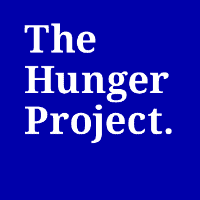
Putting an end to the conditions of poverty and marginalization in which indigenous women live is the best way to eradicate violence.
Statement by CHIRAPAQ Director Tarcila Rivera Zea for 2013 International Day for the Elimination of Violence Against Women.
Peru recently hosted the Global Indigenous Women’s Conference, which brought together leaders from Africa, the Pacific, Europe, Asia, Latin America, North America and Russia. In one voice, the indigenous world declared that we are against all forms of violence, wherever it comes from and any way it is manifested.
We are against the assault on our bodies, originating from domestic violence, sexual abuse, practices such as female circumcision and the most extreme form of violence, femicide. For indigenous women specifically, violence is expressed in many forms, even today, that are nearly invisible to others.
We live in countries that do not recognize our existence and assume our protection. We have no ability to access quality education and have economic autonomy. And we are not aware of the obligations that our states have towards us. We believe that this situation of complete vulnerability, in which we are immersed, is another form of violence.
For indigenous women there is also a form of violence in nature. While Greenland Inuit women see the rising waters banish their communities as a result of climate change, the Quechua Indians of Peru face mining companies in defense of their water sources.
Each day this pressure pushes indigenous women out of their communities, to the cities, where they are victims of labor and sexual exploitation. Disappearing with these guardians of indigenous territories is the ancestral knowledge that ensures biodiversity in the world and can be the answer to face the brunt of climate change.
Our own experience has shown us that we will not eradicate violence by addressing symptoms only.
Peru is the second largest population of indigenous women in Latin America, with a population of about 3.2 million. According to a World Bank study in Peru of women victims of violence, 60% are more likely to lose a child before the end of pregnancy, 21.3% are more likely to experience complications during delivery and 19.6% are more likely to contract sexually transmitted disease. More than half of these women are in rural areas.
Violence against women has consequences on their health and well-being of their children, and these costs are borne by all citizens. According to the Agenda for Development of the UN, in Latin America alone, we spend 2% of GDP in alleviating the consequences of violence. In Peru, the state spends an average of 36 million soles (about US$12 million) on social programs that mitigate, but don’t solve the problem.
An indigenous woman accessing a quality education is more likely to escape poverty, become part of the productive forces of our countries, and ensure the sustainable management of natural resources.
In celebrating the International Day for the Elimination of Violence Against Women, ask those who are in a position of power to contribute to the eradication of this problem to act immediately. Indigenous women require programs that lead to sustainable change. Making the decision to invest in us is not only a moral duty, but a way of promoting the development of our countries.

